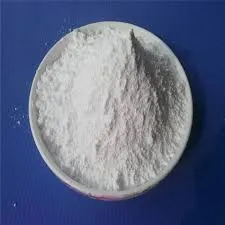Water Disinfection Chemicals Ensuring Safe Drinking Water
In today's world, access to clean and safe drinking water is a fundamental necessity for health and well-being. As populations grow and urban areas expand, the demand for effective water treatment solutions becomes critical. Water disinfection is a key process in ensuring that water is free from pathogenic microorganisms which can cause waterborne diseases. Various disinfection chemicals are employed in this process, each with unique properties and effectiveness.
The Importance of Water Disinfection
Pathogens, including bacteria, viruses, and protozoa, are often present in untreated water sources. These microorganisms can lead to severe health issues, including gastrointestinal illnesses, cholera, and dysentery. Water disinfection is, therefore, essential in treating municipal water supplies and ensuring that water meets safety standards established by health authorities. Proper disinfection processes can significantly reduce the risk of outbreaks and protect public health.
Common Water Disinfection Chemicals
Various chemicals are utilized in the water disinfection process, each with its own advantages and disadvantages. Here are some of the most commonly used water disinfection chemicals
1. Chlorine One of the oldest and most widely used disinfectants, chlorine is effective in killing a wide range of pathogens. It works by penetrating the cell walls of microorganisms and disrupting their metabolic processes. Chlorine is relatively inexpensive and easy to use, making it a preferred choice for municipal water treatment. However, the by-products formed during the disinfection process, such as trihalomethanes (THMs), can be harmful, necessitating careful monitoring.
2. Chloramine Formed by combining chlorine with ammonia, chloramine is used as a secondary disinfectant in many water systems. It is more stable than chlorine, decreasing the likelihood of recontamination during water distribution. Chloramine is effective against certain viruses and bacteria, but it does not provide the same level of disinfection as chlorine, particularly for some protozoa.
water disinfection chemicals

3. Ozone Ozone is a powerful oxidant and a potent disinfectant that is becoming increasingly popular in water treatment. It is generated on-site and used immediately, eliminating the risks associated with chemical storage. Ozone effectively kills bacteria, viruses, and protozoa within minutes. However, due to its high reactivity, it does not have residual properties, meaning that water must be used soon after treatment or followed by another disinfectant to ensure ongoing protection.
4. Ultraviolet (UV) Light UV disinfection is a physical method that uses ultraviolet light to inactivate microorganisms. It is a chemical-free process that does not alter the taste or odor of water. UV systems are highly effective against a broad spectrum of pathogens, including those resistant to chlorine. However, UV disinfection requires clear water for maximum effectiveness, and it does not provide residual disinfection.
5. Hydrogen Peroxide While less common than the other disinfectants, hydrogen peroxide is used in some water treatment processes, particularly in advanced oxidation processes. When combined with UV light or catalysts, it can effectively break down organic contaminants as well as disinfect water. Its use is often limited due to the need for careful management and monitoring.
Challenges and Considerations
Choosing the right disinfection chemical depends on various factors, including the level of contamination, water quality, treatment cost, and regulatory requirements. Different regions may have specific regulations governing the use of these chemicals to mitigate risks associated with disinfection by-products.
Furthermore, the emergence of resistant pathogens and changing environmental conditions demand ongoing research into more effective and sustainable disinfection methods. The integration of advanced technologies, such as membrane filtration and hybrid processes combining multiple disinfection methods, could enhance the safety and reliability of water treatment systems.
Conclusion
Water disinfection is a critical process in safeguarding public health by ensuring access to safe drinking water. The choice of disinfection chemicals plays a vital role in this process, influencing both the effectiveness of pathogen removal and the safety of treated water. As we face challenges posed by population growth and environmental changes, continuous innovation in water treatment technologies will be essential to ensure that everyone has access to clean and safe drinking water in the future.

